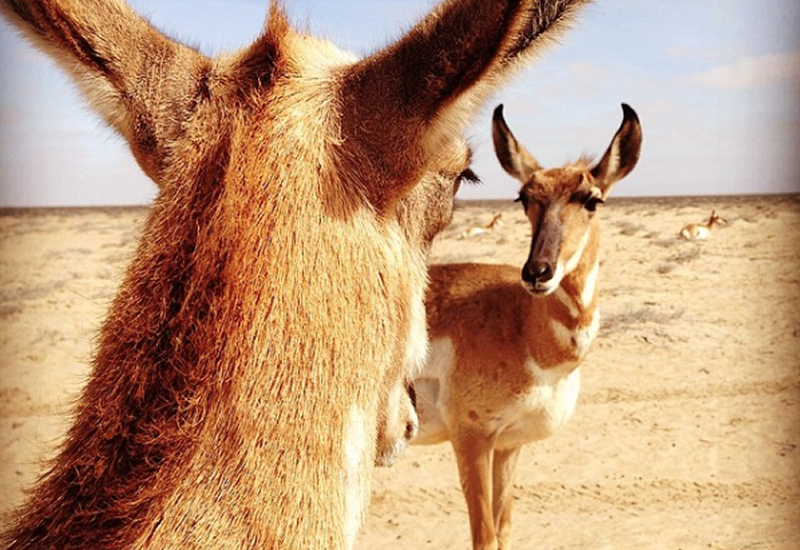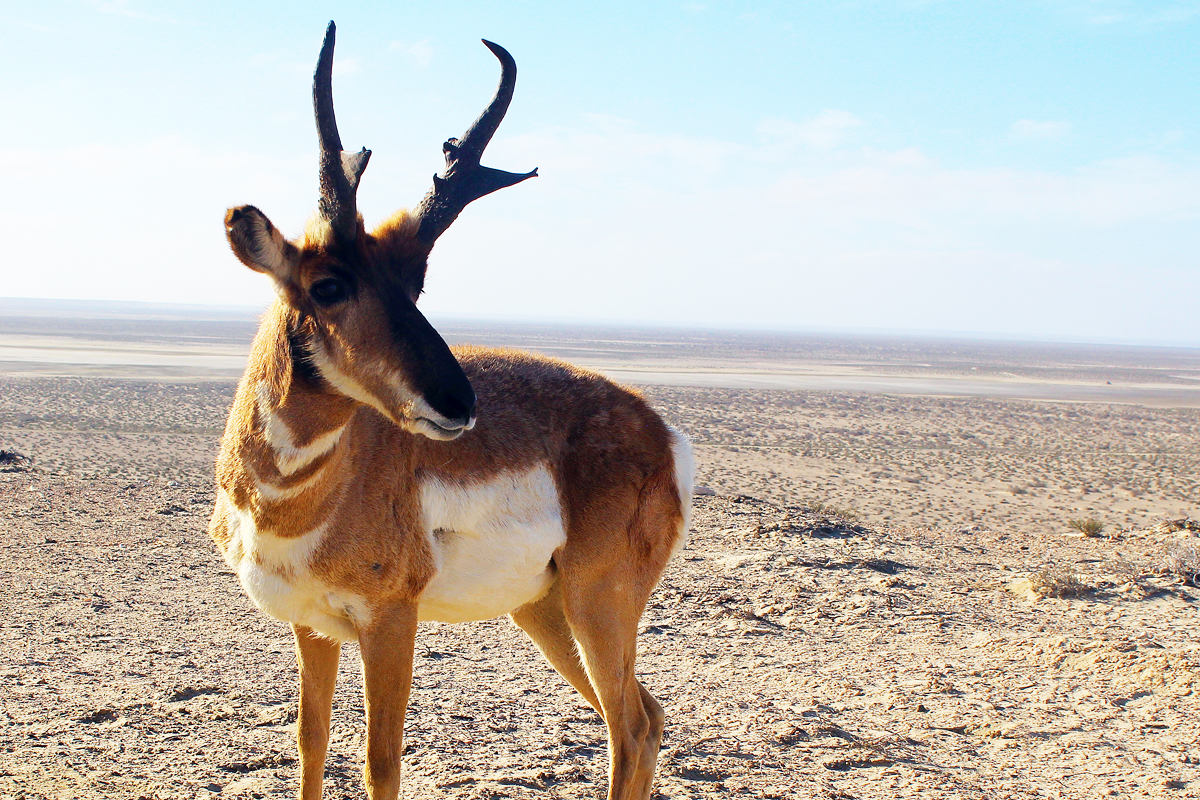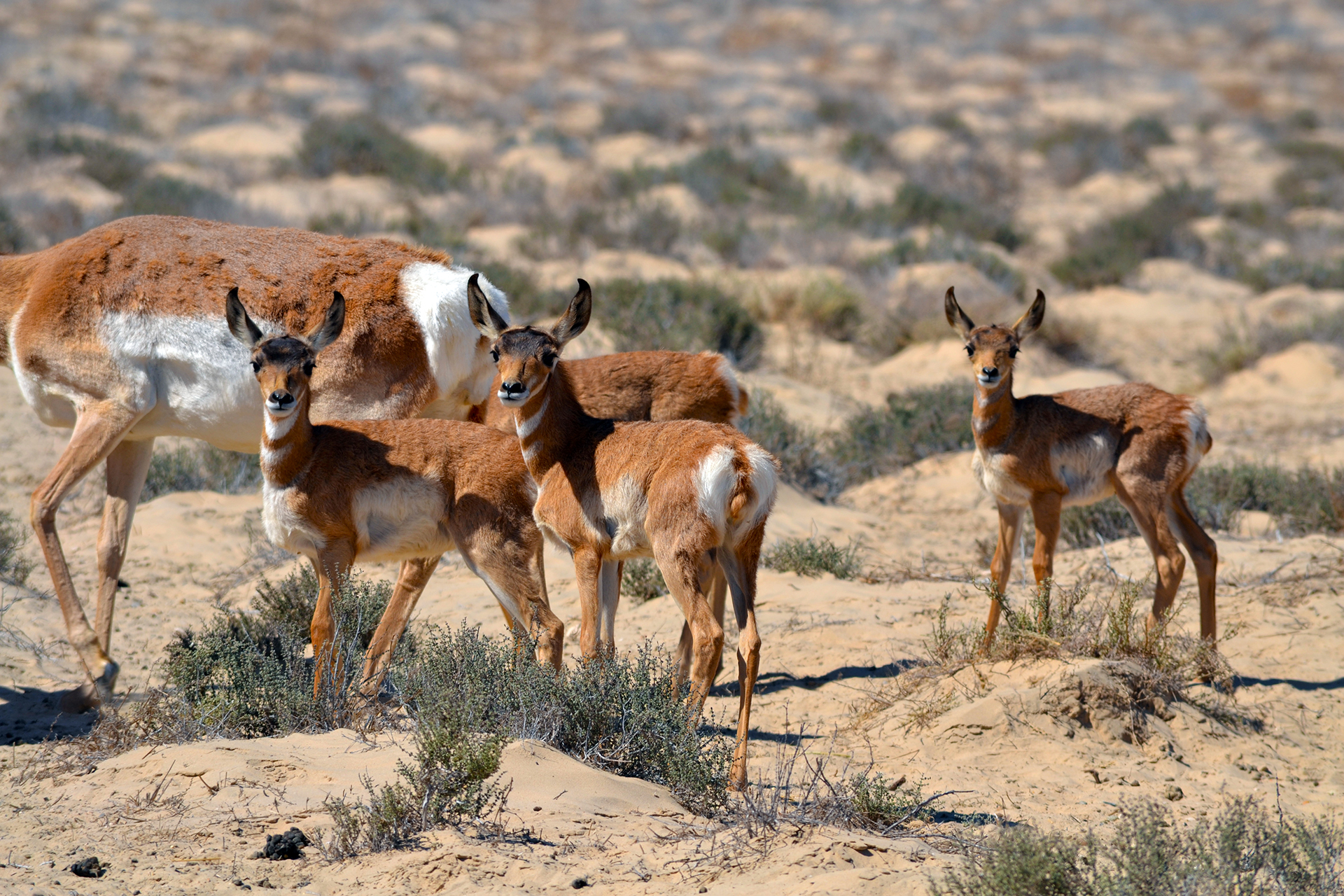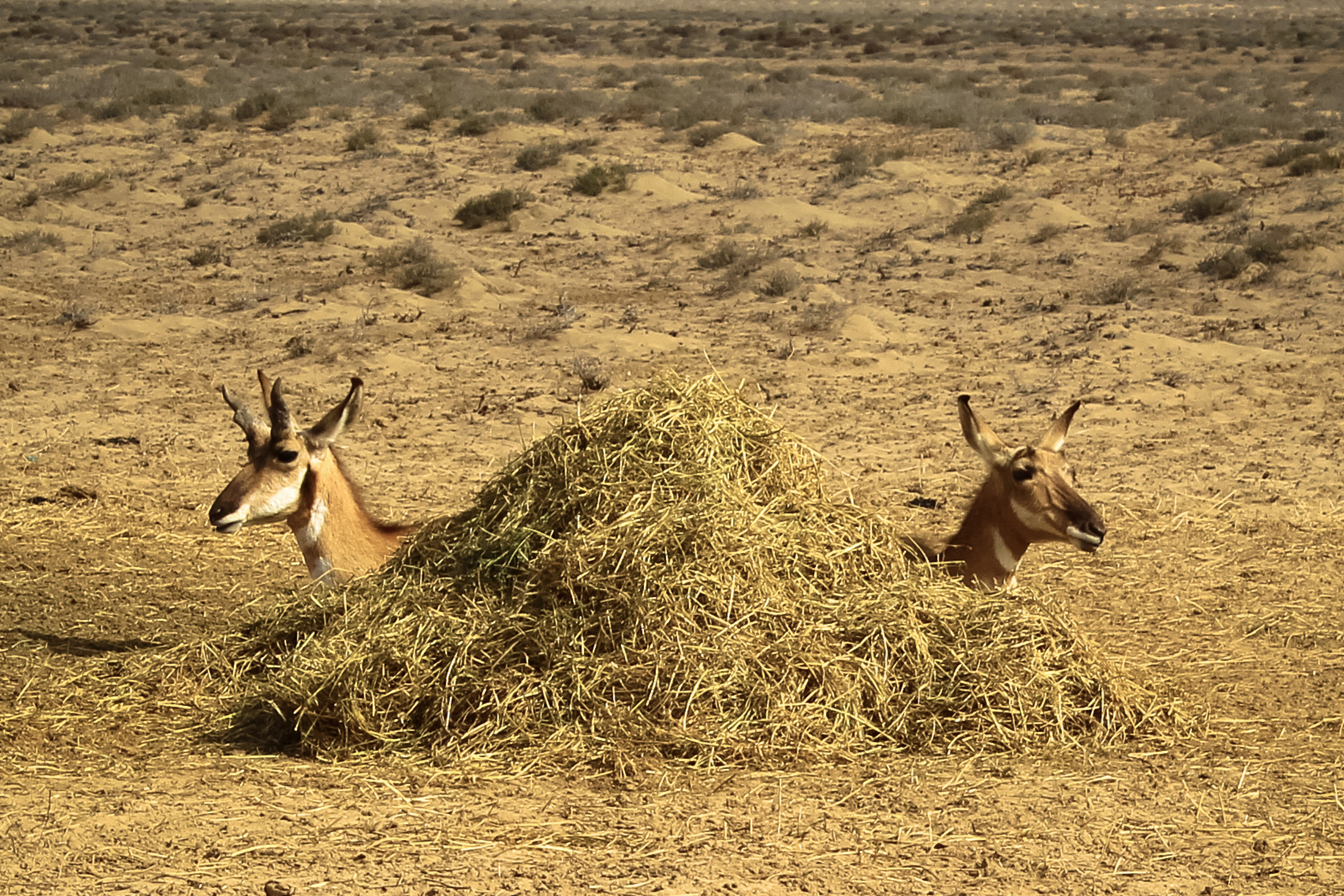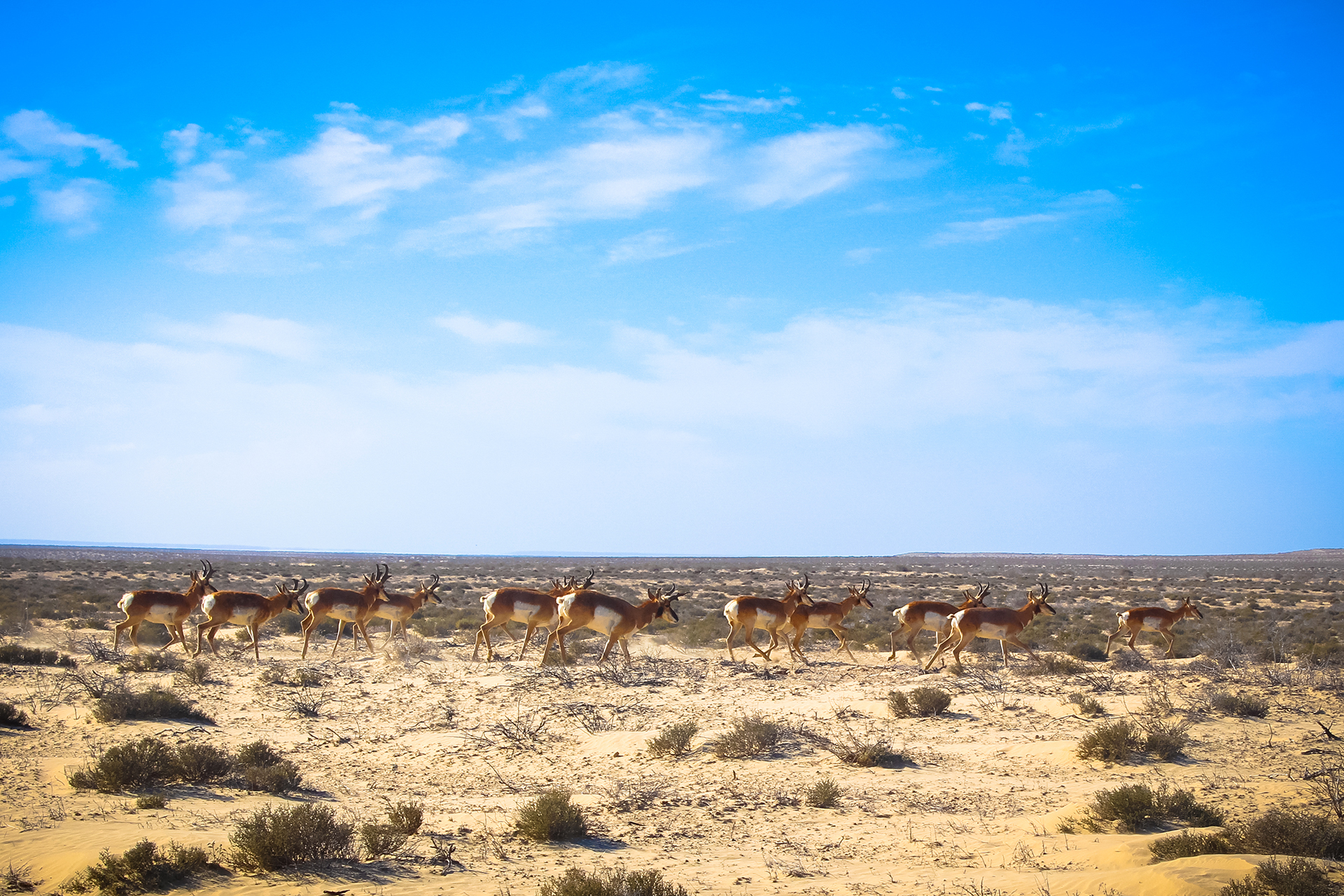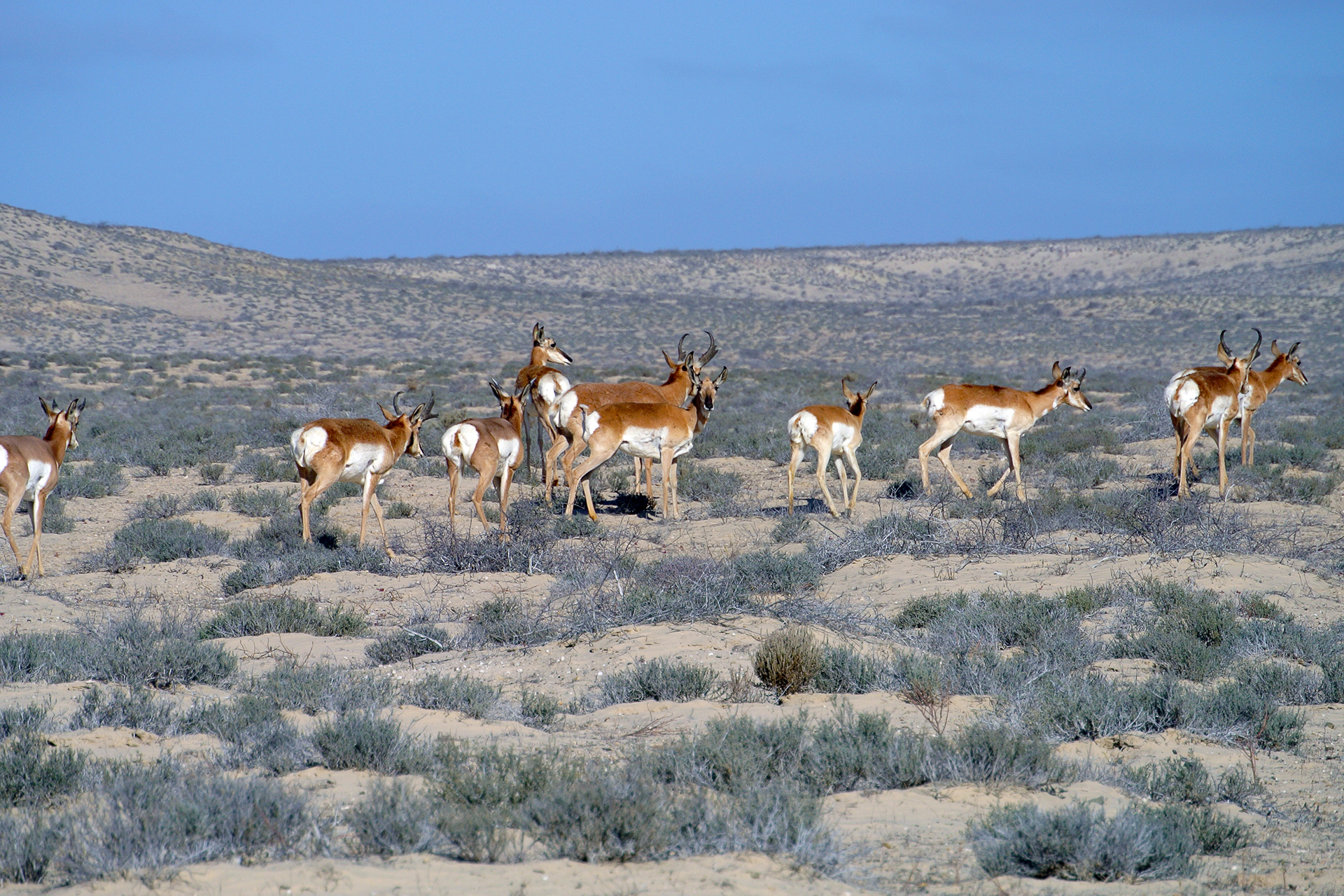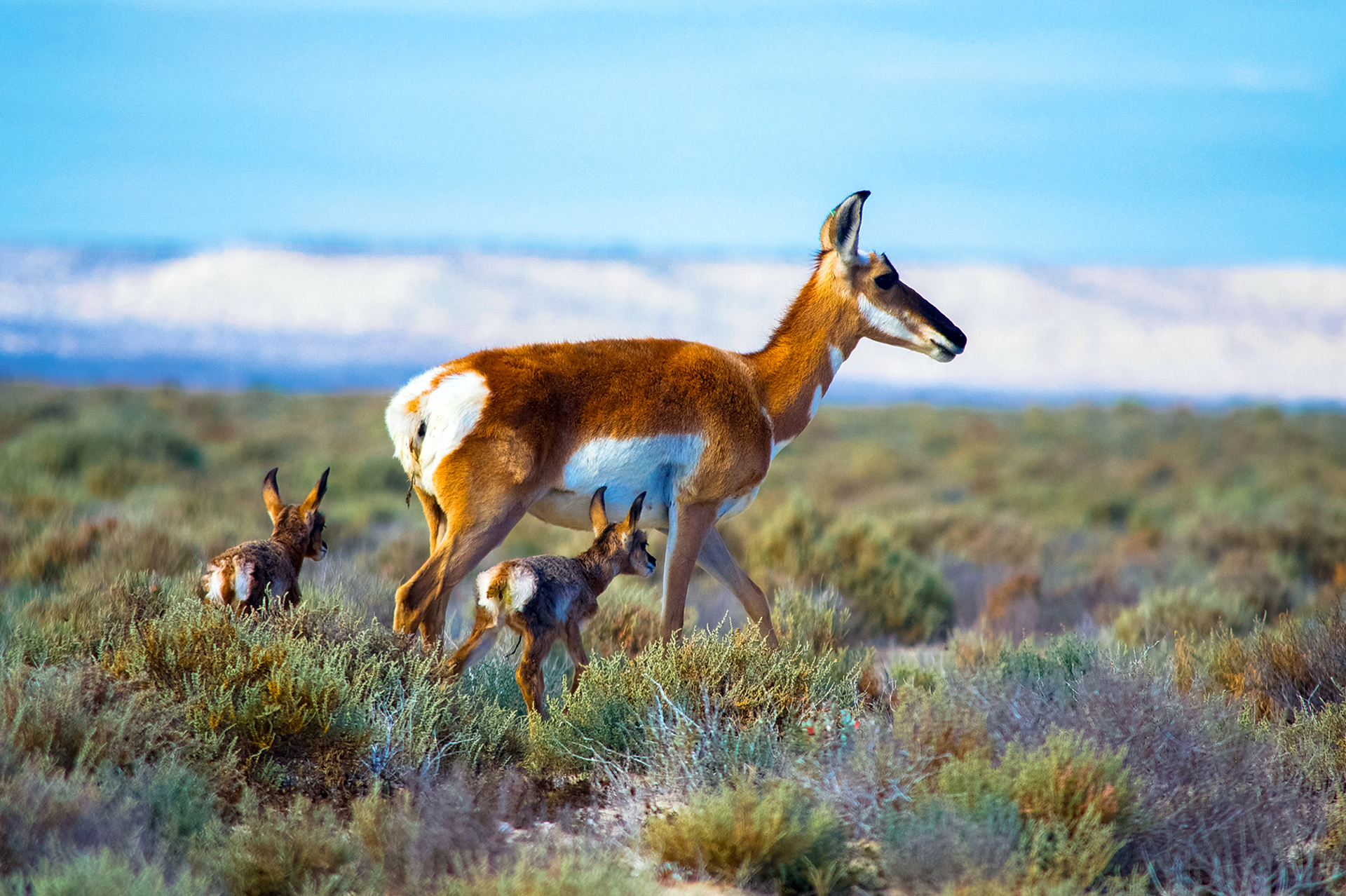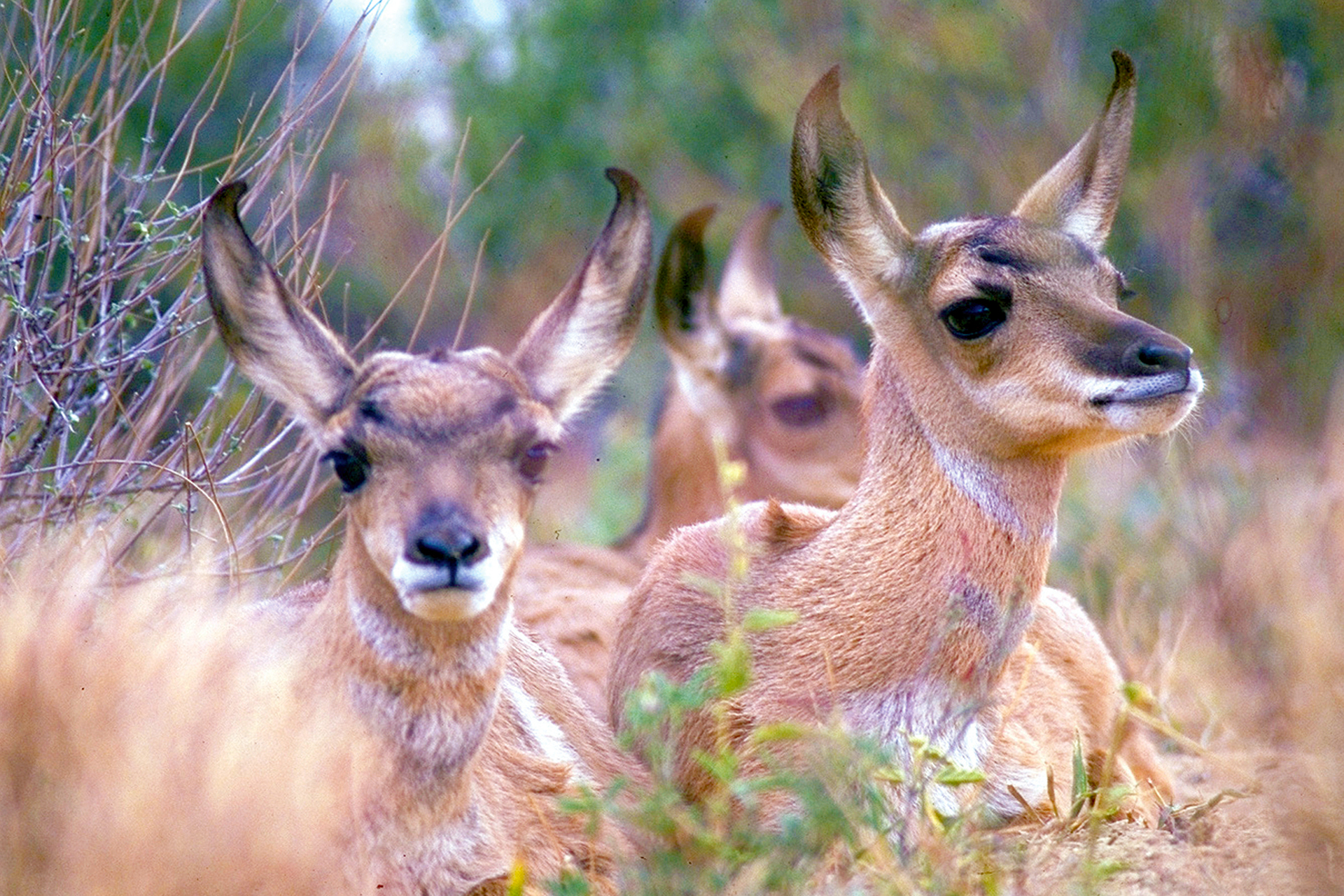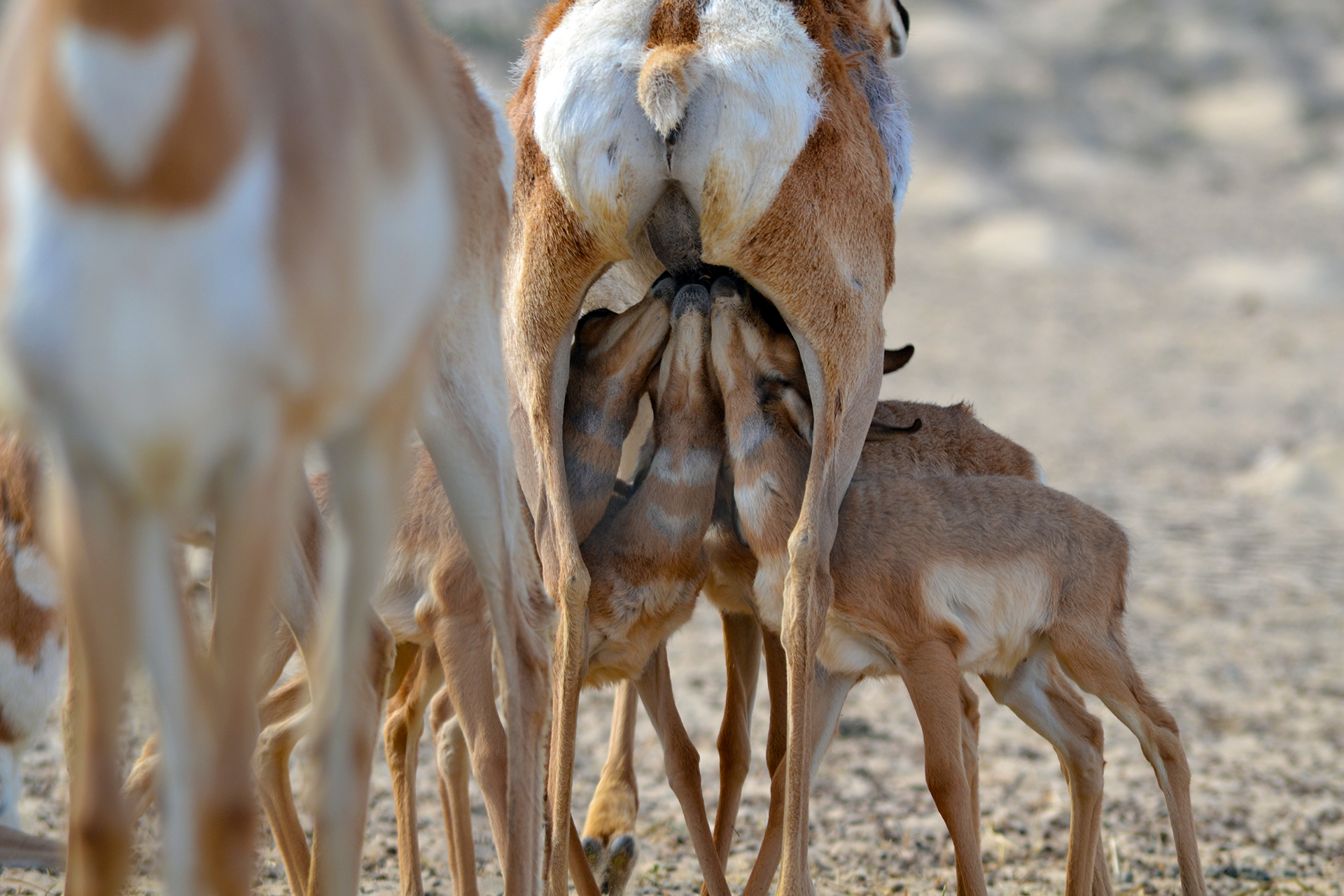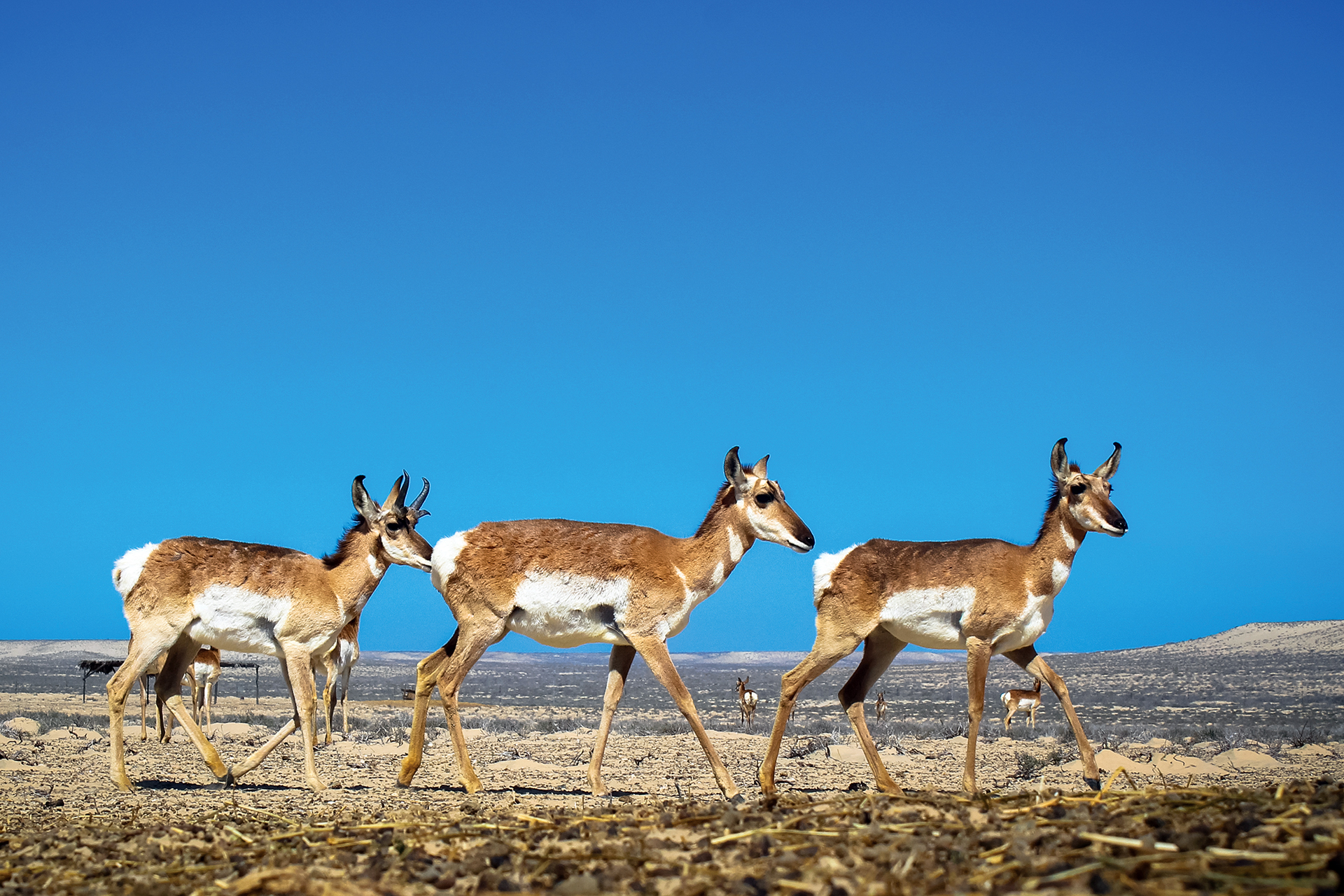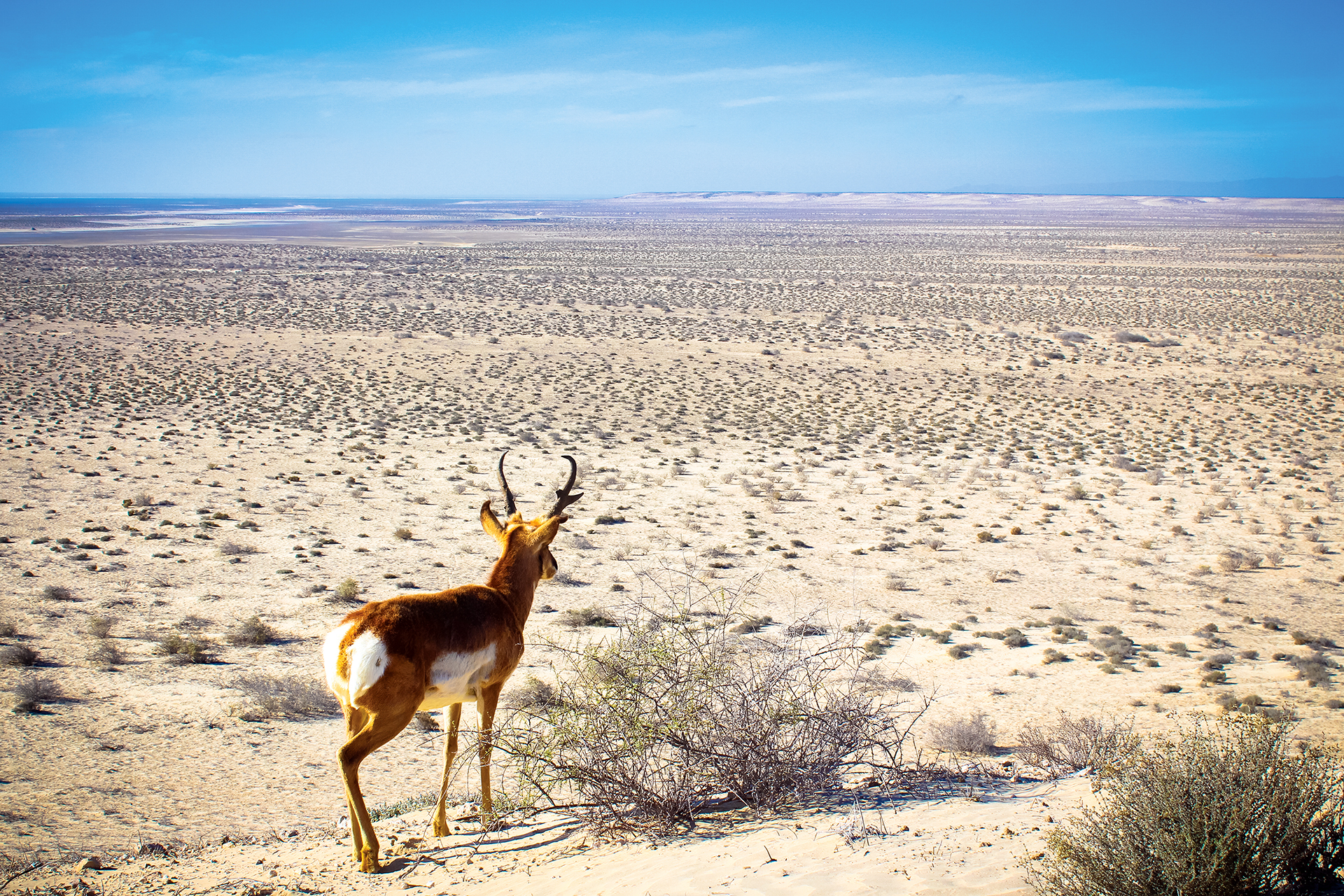PENINSULAR PRONGHORN REINTRODUCTION PROGRAM
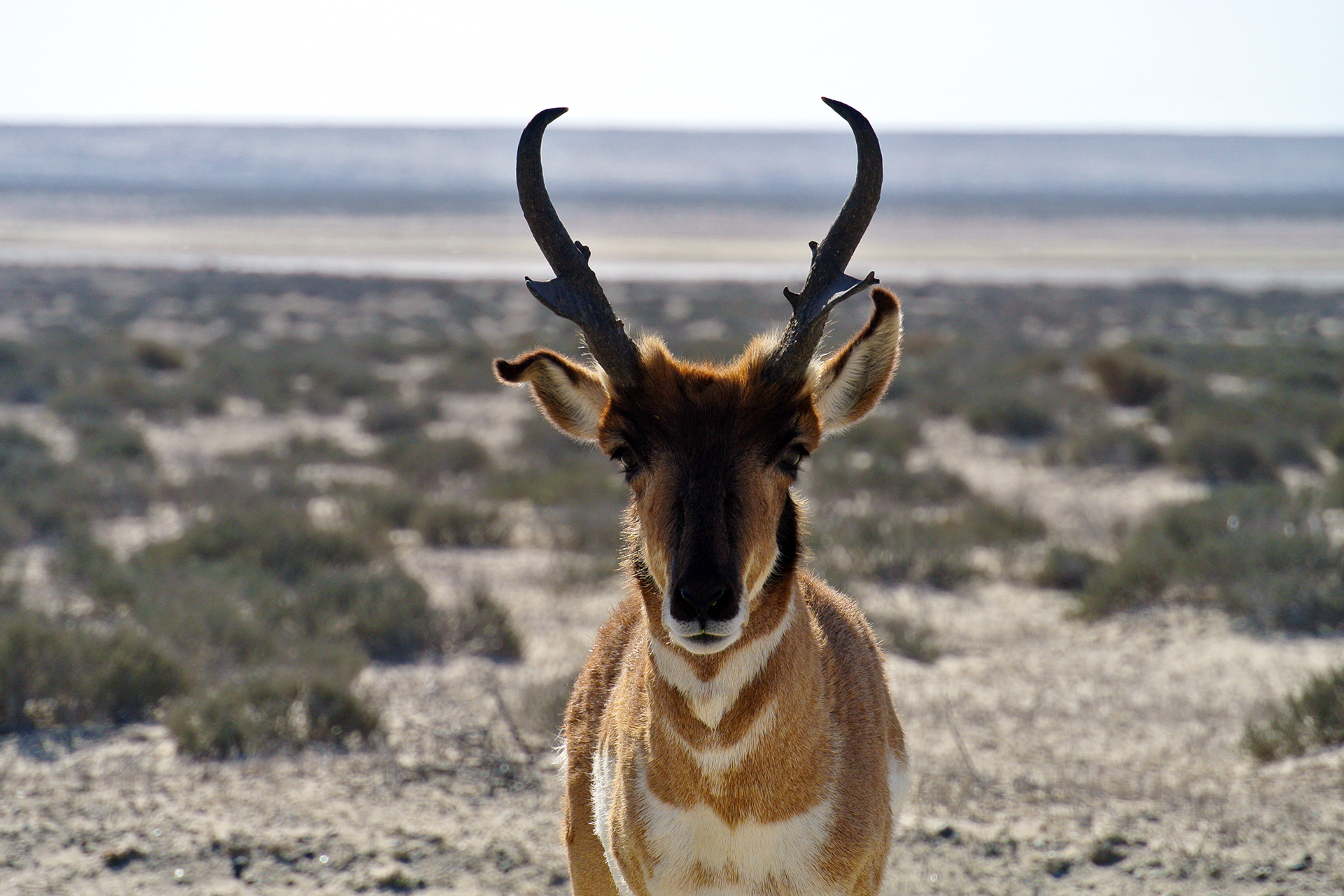
Work area
El Vizcaino Biosphere Reserve and Flora and Fauna Protection Area Valle de los Cirios, Baja California
Line of action
Species management
Duration
From 1997 to date
With the Peninsular Pronghorn Reintroduction Program (PRBP), our mission is to rescue and preserve this endemic species and its habitat in the coastal plains of the El Vizcaino desert in Baja California.
The peninsular pronghorn (Antilocapra americana peninsularis) is a mammal endemic to the Baja California Peninsula. However, a few decades of human interaction during the 20th century reduced its population to only 170 individuals, bringing it to the brink of extinction.
The peninsular pronghorn’s function is fundamental for the desert ecosystem, given that it is the largest animal on the plains, it breaks the saline layer of the soil with its hooves and with its excrement sows the seeds of the plants it has eaten, causing the resurgence of new vegetation in its path, which provides moisture and shelter to other species, which is why it is known as the desert´s farmer.
Since 1997 we have been working in the El Vizcaino desert on intensive, extensive and free-ranging management of peninsular pronghorn through the operation of the Wildlife Management and Exploitation Unit (UMA) at the Pronghorn Station. Our long-term goal is to achieve the consolidation of a viable free-living herd that will achieve a population increase of 20-30% in the next 5-10 years.
To achieve these objectives, we carried out an evaluation of release areas considering multiple factors, from habitat quality to the presence of the subspecies and proximity to human settlements. All coordinated by a committee with representatives of local communities, ENDESU, CONANP and the Undersecretary of Environmental Sustainability of the state of Baja California.
In order to reduce competition with domestic livestock, we build fences with feed and water troughs in key areas, and local ejidos conduct monthly monitoring and supply forage and water to the sluices. These actions are essential to the long-term success of the project.
The release of the specimens is carried out under strict safety protocols for pronghorns. In addition, we constantly monitor the released specimens and those in captivity are provided with the necessary care and attention to ensure their success once they are released.
This project is proof that conservation and restoration of natural areas are possible. Our experience of more than 25 years and our achievements speak for themselves. Every action we take is a step towards a future in which the peninsular pronghorn and its habitat can thrive.


